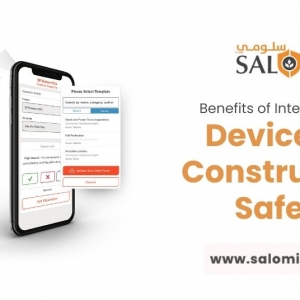Life jackets, also known as personal flotation devices (PFDs), are essential for ensuring safety during water activities. With various types available, each designed for specific environments and purposes, choosing the right one can be challenging. This article will outline the different types of life jackets and provide guidance on selecting the right type for your needs.

1. Offshore Life Jackets (Type I PFDs)
Characteristics:
Buoyancy: At least 22 pounds for adults.
Design: Bulky but provides the highest level of buoyancy.
Visibility: Often brightly colored with reflective tape for better visibility.
Best For:
Open, rough, or remote waters where rescue may take longer.
Situations where maximum buoyancy is necessary, such as for unconscious individuals.
Advantages:
Keeps the wearer face-up, even if unconscious.
Excellent for extreme conditions and long-duration survival.
Drawbacks:
Bulky and less comfortable for extended wear.
2. Near-Shore Buoyant Vests (Type II PFDs)
Characteristics:
Buoyancy: Minimum of 15.5 pounds for adults.
Design: Less bulky than Type I, still provides good buoyancy.
Visibility: Available in bright colors with some reflective elements.
Best For:
Calm, life jackets used for inland waters where quick rescue is likely.
Boating activities near the shore.
Advantages:
Lighter and more comfortable than Type I.
Suitable for a variety of near-shore water activities.
Drawbacks:
Not as effective at turning an unconscious person face-up.
Less buoyant than Type I.

3. Flotation Aids (Type III PFDs)
Characteristics:
Buoyancy: Minimum of 15.5 pounds for adults.
Design: Designed for comfort and continuous wear.
Visibility: Available in a range of colors and styles, often with added features like pockets.
Best For:
Calm waters and supervised activities such as kayaking, canoeing, and sailing.
Situations where the wearer is likely to be conscious and able to assist in their own rescue.
Advantages:
Comfortable for prolonged use and allows for a wide range of motion.
Many designs to fit specific activities.
Drawbacks:
Less buoyant and doesn’t automatically turn the wearer face-up.
Not suitable for rough or remote waters.
4. Throwable Devices (Type IV PFDs)
Characteristics:
Buoyancy: Designed to be thrown to a person in the water.
Design: Includes ring buoys, cushions, and horseshoe buoys.
Visibility: Often brightly colored for easy spotting.
Best For:
Boats as a backup safety device.
Situations where a person can grab and hold onto the device until rescued.
Advantages:
Simple to use and can be thrown to anyone in the water.
Provides additional safety for boats, complementing wearable life jackets.
Drawbacks:
Not designed for unconscious individuals.
Ineffective if the person cannot hold onto it.
5. Special Use Devices (Type V PFDs)
Characteristics:
Buoyancy: Varies depending on the specific design and purpose.
Design: Includes work vests, deck suits, hybrid PFDs, and inflatable PFDs.
Visibility: Varies widely; working life jackets are designed for specific conditions or professional use.
Best For:
Specific activities such as windsurfing, waterskiing, or professional maritime work.
Situations requiring specialized equipment that provides both flotation and other functional benefits.
Advantages:
Tailored to specific activities, offering both safety and functionality.
Some designs (e.g., inflatables) are very comfortable and compact when not inflated.
Drawbacks:
Must be used according to the manufacturer’s instructions to be effective.
Some types require regular maintenance and checks.
Useful Tips on Selecting the Right Type of Life Jacket
1. Determine the Water Environment
Open and Rough Waters:
Type I PFDs (Offshore Life Jackets): These provide the highest buoyancy (at least 22 pounds for adults) and are designed to keep the wearer’s head above water even if unconscious. Ideal for open, rough, or remote waters where rescue may take longer.
Calm, Inland Waters:
Type II PFDs (Near-Shore Buoyant Vests): Offer good buoyancy (minimum of 15.5 pounds for adults) and are suitable for calm, inland waters where quick rescue is likely. They are less bulky than Type I but may not turn an unconscious person face-up as effectively.
Type III PFDs (Flotation Aids): Designed for comfort and continuous wear. They provide the same buoyancy as Type II (minimum of 15.5 pounds for adults) and are best for calm waters and supervised activities such as kayaking, canoeing, and sailing. They are comfortable and allow for a wide range of motion but are not suitable for rough or remote waters.
2. Consider the Activity
Boating Near Shore:
Type II PFDs: Offer a good balance of comfort and safety for boating activities near the shore.
Water Sports (e.g., Kayaking, Paddleboarding):
Type III PFDs: Ideal for water sports as they provide comfort and freedom of movement.
Specialized Activities (e.g., Windsurfing, Waterskiing):
Type V PFDs (Special Use Devices): Tailored for specific activities and offer both safety and functionality. They include work vests, deck suits, hybrid PFDs, and inflatable PFDs. Some designs, like inflatables, are very comfortable and compact when not inflated.
3. Evaluate Comfort and Fit
Proper Fit:
Ensure the life jacket fits snugly without being too tight. Adjustable straps can help achieve the right fit. A properly fitted life jacket should not rise above the wearer’s chin or ears when lifted at the shoulders.
Comfort:
Consider the design and material for comfort during extended wear. Type III and Type V PFDs are typically more comfortable for active use. Look for features like padded straps and ventilation.
4. Check for Certification and Compliance
Certification:
Ensure the life jacket meets relevant safety standards, such as those set by the U.S. Coast Guard, ISO, or other local regulatory bodies. Certified life jackets have been tested for performance and safety.
Compliance:
Verify that the life jacket is appropriate for your region and activity. Different regions may have specific requirements for life jacket use.

5. Inspect Features and Maintenance Requirements
Visibility:
Bright colors and reflective tape enhance visibility in the water, making it easier for rescuers to spot the wearer.
Maintenance:
Some life jackets, especially inflatable types (Type V), require regular checks and maintenance. Ensure you are prepared to maintain your PFD properly. Regularly inspect for wear and tear, and follow the manufacturer’s instructions for care and maintenance.
6. Additional Tips
Child and Pet Life Jackets: Ensure you have appropriately sized life jackets for children and pets. These are specifically designed for smaller body sizes and unique needs.
Try Before You Buy: If possible, try on different life jackets to find the best fit and comfort. Some stores may allow you to test them in water.
Educate Yourself: Familiarize yourself with the different features and functions of life jackets. Understand how to properly wear and use it in an emergency.
Conclusion
Choosing the right life jacket is crucial for safety on the water. The type of life jacket needed depends on the activity, water conditions, and individual needs. By understanding the different types available and considering the specific water environment, activity, comfort, certification, and maintenance needs, you can select a life jacket that provides optimal safety and convenience.







